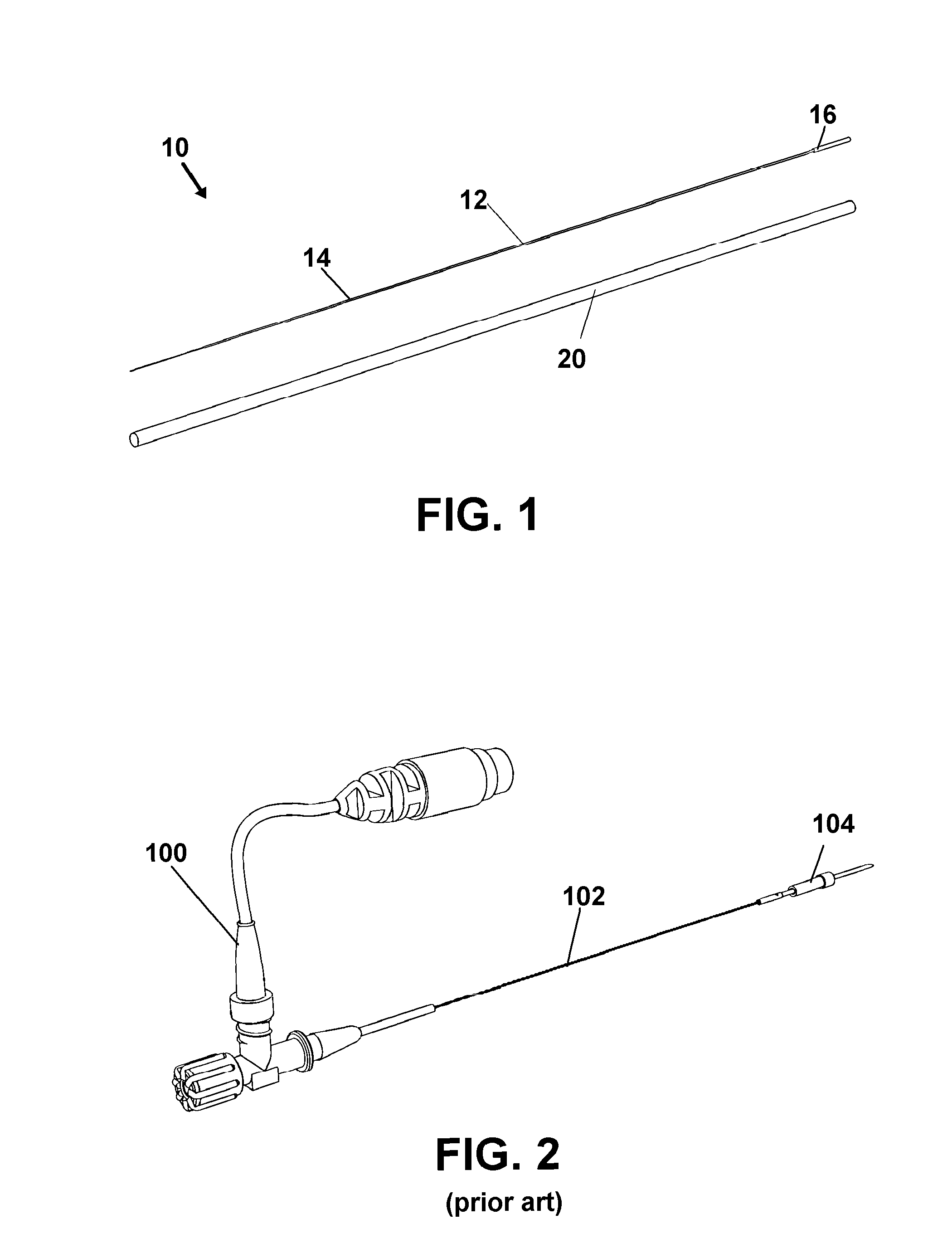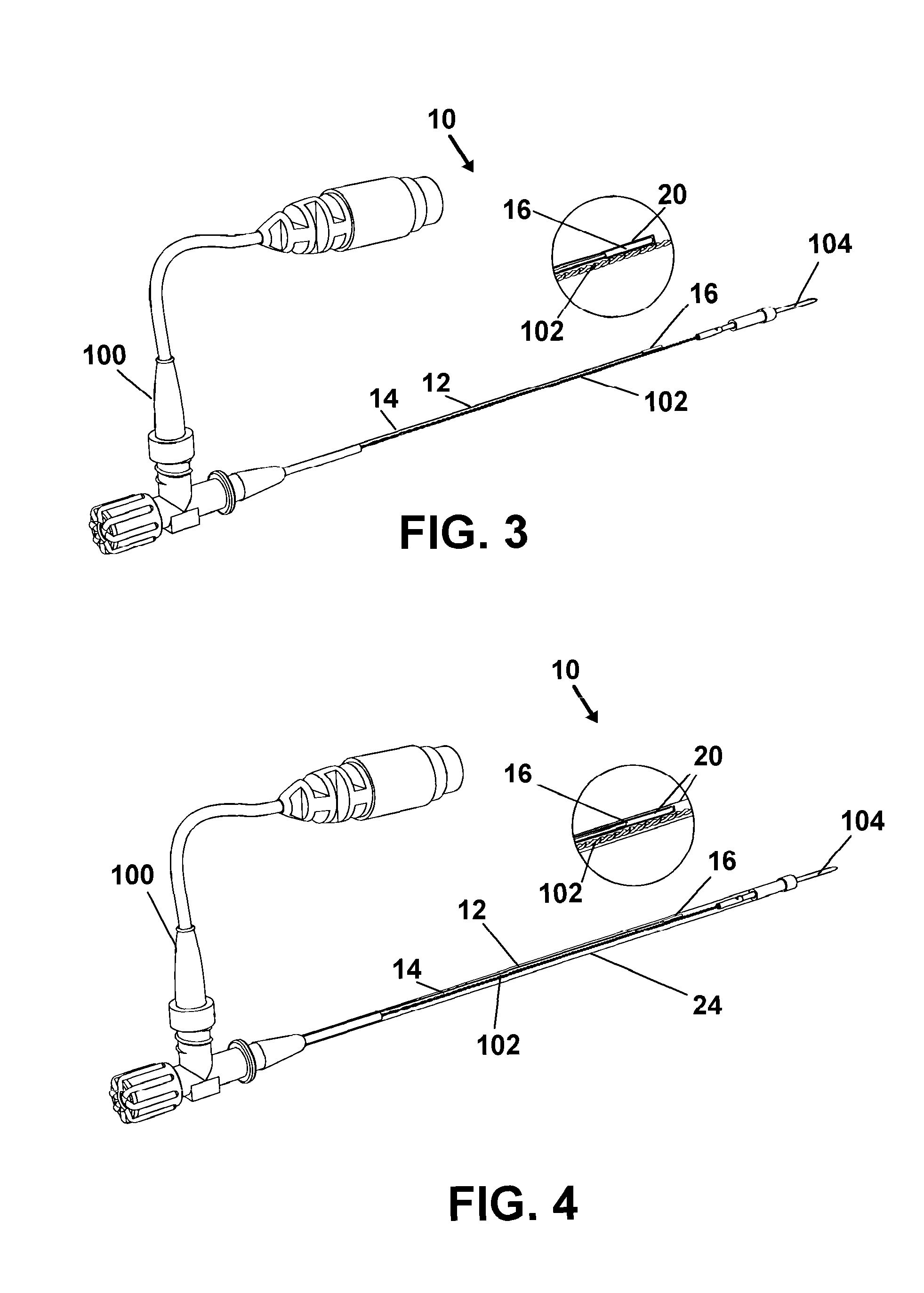Medical surgical navigation sensor mounting system
a sensor mounting and medical technology, applied in the field of surgical devices employed, can solve the problems of high failure rate during manufacturing, high cost, and high precision of similar medical sensors, and achieve the effect of facilitating wider deployment of such systems and accurate registration of engagemen
- Summary
- Abstract
- Description
- Claims
- Application Information
AI Technical Summary
Benefits of technology
Problems solved by technology
Method used
Image
Examples
Embodiment Construction
[0052]Now referring to drawings in FIGS. 1-16, wherein similar components are identified by like reference numerals, there is seen in FIG. 1 the sensor 12 and the heat shrinking or polymeric material shown as a shrink tube 20 which optionally may include an interior thermoplastic adhesive surface to provided increased adhesion of the formed polymeric jacket to the underlying assembly and / or catheter or wire. These components are employed in all particularly preferred modes of the medical sensor operative engagement and mounting system 10 herein. The assembled sensor 12 generally consists of an electrically conductive lead wire 14 and the sensing component 16 engaged thereon.
[0053]Again, the sensing component 16 can be any type of sensor or marker employed in the art of surgical navigation for example electromagnetic sensors which broadcast when provided electrical current from the lead wire 14 which forms the sensor assembly of an aggregate length of the two operationally and electr...
PUM
 Login to View More
Login to View More Abstract
Description
Claims
Application Information
 Login to View More
Login to View More - R&D
- Intellectual Property
- Life Sciences
- Materials
- Tech Scout
- Unparalleled Data Quality
- Higher Quality Content
- 60% Fewer Hallucinations
Browse by: Latest US Patents, China's latest patents, Technical Efficacy Thesaurus, Application Domain, Technology Topic, Popular Technical Reports.
© 2025 PatSnap. All rights reserved.Legal|Privacy policy|Modern Slavery Act Transparency Statement|Sitemap|About US| Contact US: help@patsnap.com



